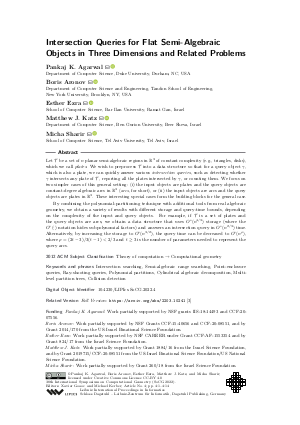LIPIcs.SoCG.2022.4.pdf
- Filesize: 0.73 MB
- 14 pages

 Creative Commons Attribution 4.0 International license
Creative Commons Attribution 4.0 International license





















Feedback for Dagstuhl Publishing